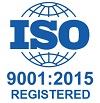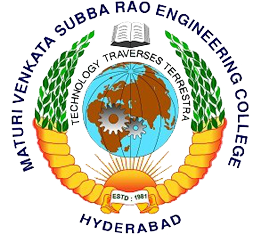WITH EFFECT FROM THE ACADEMIC YEAR 2011 - 2012
CE 202
ENGINEERING MATERIALS AND CONSTRUCTION
Instruction 4 Periods per week
Duration of University Examination 3 Hours
University Examination 75 Marks
Sessional 25 Marks
UNIT – I
Stones : Uses of stones as building materials. Characteristics of good building stones. Classification of stones. Quarrying, various methods. Dressing and polishing of stones.
Bricks : Composition of brick clay. Methods of manufacturing bricks. Preparation of brick earth. Tempering. Pugmill. Various steps of moulding. drying and method of burning of bricks; clamps, intermittent and continuos kilns, Bull's trench kiln, Hoffman's kiln. Characteristics of good building bricks, classification of bricks.
Building Blocks : Hollow building blocks for walls and roofing. Load bearing and non-load bearing blocks. Provisions of IS 2572. Flyash bricks and manufacture.
UNIT – II
Cement : Chemical composition of the ingredients for manufacturing cement. Outline of manufacturing process, flow diagram. Tests on cement. IS 269 specifications for Ordinary Portland Cement, various types of cements.
Blended Cements : Various type and their uses.
Fine Aggregate : Characteristics of good mortar sand, availability of sand and its classifications. Alternatives to natural sand. Bulking of sand.
Coarse Aggregate : Characteristics of good coarse aggregates for manufacture of concrete. Test on aggregates. Light weight aggregates.
UNIT – III
Mortar : Different types of mortars, preparation, setting and curing Manufacturing methods of mortar.
Concrete : Batching, mixing, transporting, compacting and curing, Readymix concrete.
Reinforcing steel : Types of reinforcement, specifications, storage and handling.
UNIT – IV
Timber : Timber as a building material and its uses. Various types of timber. Seasoning and its importance. Preservation of wood. Laminates and their uses.
Paints, Varnish and Distemper : Constituents, characteristics of good paints, Bases, vehicles, thinners and colouring pigments. Painting of different types of surfaces; types of varnish, and application. Types of distemper, and application.
Emerging Building Materials : Energy conservation in buildings. Recycled materials, local materials and industrial waste products as a mens of sustainable development, Glass, composites and smart materials.
UNIT – V
Floors : Characteristics of good floors. Common types of floors. Stone flooring, concrete flooring, terrazo flooring. Ceramic and mosaic tiles. Industrial floors. Methods of construction and maintenance.
Arches : Geometrical forms. Semicircular, segmental, HorseShoe, Stilted, Blunt, Equilateral, Acute, Three centered, Two cusped flat arch, Types of brick and stone arches.
Plastering, Pointing and White / Color Washing : Types of plastering, preparation of surfaces, and defects. Types of pointing, preparation of surfaces. Preparation and application of white wash, and colour wash.
Form work and scaffolding : Requirements, types, materials, accessories, reuses and maintenance.
Suggested Reading :
1.Sushil Kumar, Building construction, Standard Publishers, 1992.
2.S.P. Arora and S.P. Bindra, A Text Book on Building Construction,
Dhanpat Rai Publications, 2004.
3.National Building Code of India, 2005.
4.Advances in Building Materials and Construction, Central Building Research Institute, Roorkee, 2004.
5.Civil Engineering Materials, National Institute of Technical Teachers, Tata McGraw-Hill, New Delhi.
Additional Reading :
1.IS 432 : 1982, Indian Standard Specification for Mild Steel and Hard-Drawn Steel Wire for Concrete Reinforcement, Part I and II,
Bureau of Indian Standards, New Delhi, 1982.
2.IS 1077 : 1992, Indian Standard Common Burnt Clay Building Bricks __ Specification, Bureau of Indian Standards, New Delhi, 1992.
3.IS 1786 : 1985 Indian Standard Specification for High Strength Deformed Steel Bars and Wires for Concrete Reinforcement, Bureau of
Indian Standards, New Delhi, 1985.
4.IS 2117 : 1991, Indian Standard Guide for Manufacture of Hand-made
Common Burnt Clay Building Bricks, Bureau of Indian Standards, New Delhi, 1991.
5.IS 2248 : 1992, Indian Standard Glossary of Terms relating to Clay Products for Buildings, Bureau of Indian Standards, New Delhi, 1992.
6.IS 2572 : 1963 Indian Standard Code of Practice for Construction of
Hollow Concrete Block Masonry, Bureau of Indian Standards, New Delhi, 1963.
7.IS 3495 (Parts 1 - 4): 1992, Indian Standard Method of Test for Burnt Clay Building Bricks, Bureau of Indian Standards, New Delhi, 1992.
8.IS 11650 : 1991, Indian Standard Guide for Manufacture of Common
Burnt Clay Building Bricks by Semi-Mechnised Process, Bureau of Indian Standards, New Delhi, 1991.
9.IS 12269 : 1987, Indian Standard Specifications for Grade 53 Ordinary Portland Cement, Bureau of Indian Standards, New Delhi,1990.
10.IS 13767 : 1993, Indian Standard Burnt Clay Flash Building Bricks
__Specificaton, Bureau of Indian Standards, New Delhi, 1993.
11.IS 14867 : 1999, Indian Standard False Work for Concrete Structures
__Guidelines, Bureau of Indian Standards, New Delhi,1999.
1.Sushil Kumar, Building Construction, Standard Publishers.
2.SP Arora, A Text Book of Building Construction, SP Bindra Dhanpat Rai Publications.
3.National Building Code, 2005
4.Advances in Building Materials and Construction CBRI, Roorkee, 2004.
5.Civil Engineering Materials, National Institute of Technical Teachers, Tata McGraw-Hill, New Delhi.
6.P. C. Verghese, Building Materials, PHI Learning Pvt. Ltd.
7.B.C.Punmia, Ashok Kumar Jain, Arun Kumar Jain, Building Construction, Laxmi Publications.



